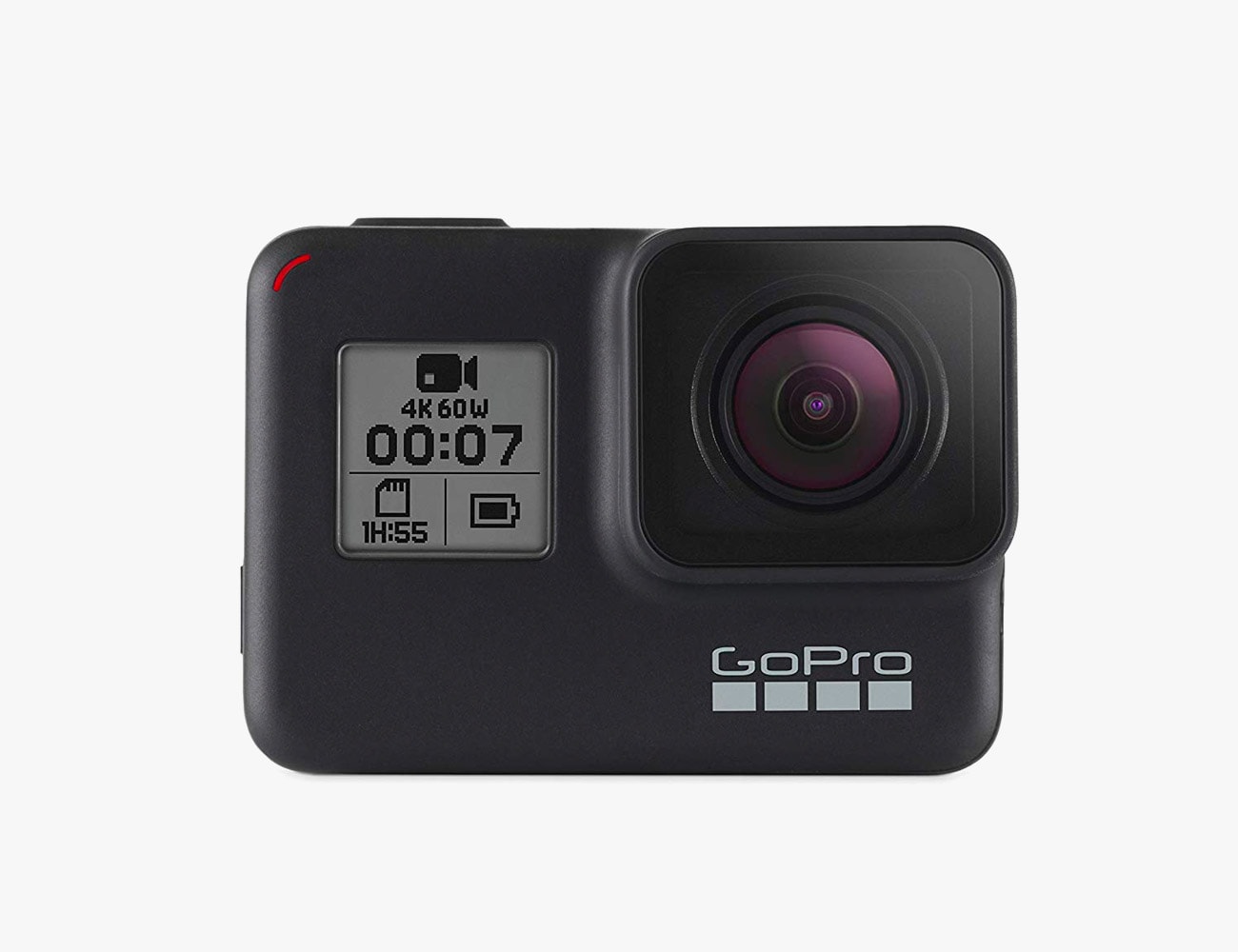Goggles might be the most important skiing and snowboarding accessory — the ability to see the variations in the snow surface is the only way to react to them. Goggles haven’t changed that much in the decades since Dr. Bob Smith created his version with a sealed double lens and breathable foam to prevent fogging. The most significant advancement in recent years was also pioneered by Smith (the company the doctor founded) — goggles with interchangeable lenses. Every goggle maker now offers them; the systems rely on clips, levers, locks or magnets.
Recently, a handful of companies have incorporated a new technology: electrochromism. What does that mean? Simply put, when these materials are introduced to an electric charge, they change color. It’s the same technology used to create smart glass, a material that can be dimmed by the flip of a switch, and it’s been applied to develop energy-efficient windows and the dimmable windows of Boeing’s 787 Dreamliner.
In goggles, it means that the tint of a lens can change from light to medium to dark — no magnets or locks — at the push of a button. So far only two companies have produced a goggle that harnesses electrochromism: Electric and Spy Optics. (Oakley has also debuted a version called Prizm React, which was set for release this past fall but still isn’t available. Oakley declined to comment on why.) We’ve spent the past few months testing Electric and Spy’s models to find out how they perform.
GoPro HERO7 Black
Cameras don’t come much more powerful, compact and rugged than the ones GoPro has pioneered. The latest model, the HERO7 Black, is GoPro’s most advanced camera yet. The development of HyperSmooth technology is a pivotal evolution of stabilization for these robust cameras — mimicking a gimbal grip, it essentially means the end of shaky video footage. Add in the signature waterproofness and durability and it’s easy to see why the HERO7 Black is the optimal camera for any on-the-go activity. Learn more here.
Electric Electron

Electric’s take on electrochromic goggles is called the Electron (say that ten times fast). It comes with either a white or black frame with a blue lens that can be set to 46 percent VLT at its lightest, 31 percent VLT in the middle and 15 percent VLT at its darkest. (VLT stands for “visible light transmission” and is a measurement of how much light comes through the lens. The lower the percentage, the darker the lens and the better it is for bright and sunny days.) The Electron blocks 100 percent of UV light and is anti-fog and anti-reflective.
Pros: Electric always emphasizes style with the Electron. The blue lens goes well with both frame colors. If the Electron didn’t use electrochromic tech, it’d still be a great goggle — it fit comfortably and didn’t fog in a wide range of conditions. It comes with a hard case as well as a microfiber pouch and has the feel of a premium goggle.
Furthermore, the system works well; the button to change lens tints is big and glows when it’s on (blue to indicate more than 20 percent of the battery remains, yellow when it’s between ten and 20, red when it’s below ten). It’s easy to push with a gloved or mittened hand too, and the different tints are varied enough to work well in any light condition except perhaps at night when you’d want a clear lens.
Cons: Transitioning between lens tints on the Electron is a subtle process. At times I forgot which mode I was in — the goggle doesn’t let you know through any sort of light or vibration indicator — and the system is linear, so you can only cycle one way. If you accidentally go from the darkest setting to the lightest, you’ll have to cycle through to get back.
Spy Optics Ace EC One

Spy was the first to announce its electrochromic Ace EC One. The goggle comes with a black frame and a persimmon lens. The Ace EC One’s lightest tint is 55 percent VLT, its medium tint is 31 percent VLT, and its darkest is 17 percent VLT. According to Spy, the battery charge will last for 150 tint changes. The Ace EC One uses Spy’s Happy Lens tech, which boosts color and enhances contrast for better visual clarity. The goggle blocks 100 percent of UV light, is anti-fog and scratch-resistant.
Pros: The Ace EC uses haptic feedback to let you know which lens setting you’re on — the number of times the battery unit vibrates will change letting you know where you’re at in the cycle. The Ace EC One offers a wide range of tints for varying light conditions, thereby increasing its versatility. Additionally, the battery pack is low profile and weighs 25 grams, allowing for the goggle to remain lightweight overall.
Cons: The same pro mentioned above, haptic feedback, stopped working after a few days on the mountain. The goggle would still vibrate various times during a tint change, but sometimes it would be as little as one or as many as eight, and the number of vibrations didn’t necessarily correspond to the darkness of the lens. This effectively nullified the function’s intended purpose of informing us which lens setting the Ace EC was displaying.
The Ace EC One’s lens is connected to its strap-mounted battery pack via a short, headphone-like cord. This connection is critical for maintaining the goggle’s darker lens settings. Unfortunately when moving the goggle up onto a helmet that cable often pops out, sending the Ace EC One back to its lightest setting (and causing the battery pack to vibrate continuously, and audibly).
Verdict: Electrochromism is a welcome alternative to interchangeable lenses, which provide a solution for variable light conditions in a single pair of goggles, but still require wearers to have spare lenses on-hand. That’s fine — until the weather fluctuates throughout the day, and the light with it. In both the Electron and Ace EC, the electrochromic system is still clunky. Strap-mounted battery packs are awkward looking, and single-button constructions require cycling through all three settings to get to the desired tint. These things are true for both of the goggles that we tested, but in the end, the Electron edges out the Ace EC because of that goggle’s cord connectivity issues.
Goggle companies are still perfecting interchangeable lens systems, even years after its first launch. Electrochromic lenses are brand new, and we fully expect those very same brands to find ways to more efficiently integrate them into goggle constructions for a better, hassle-free experience.






